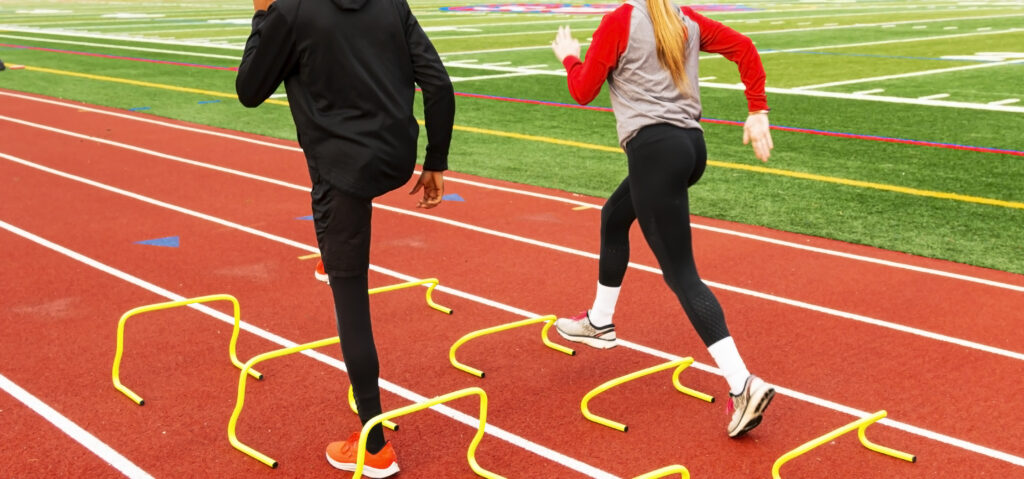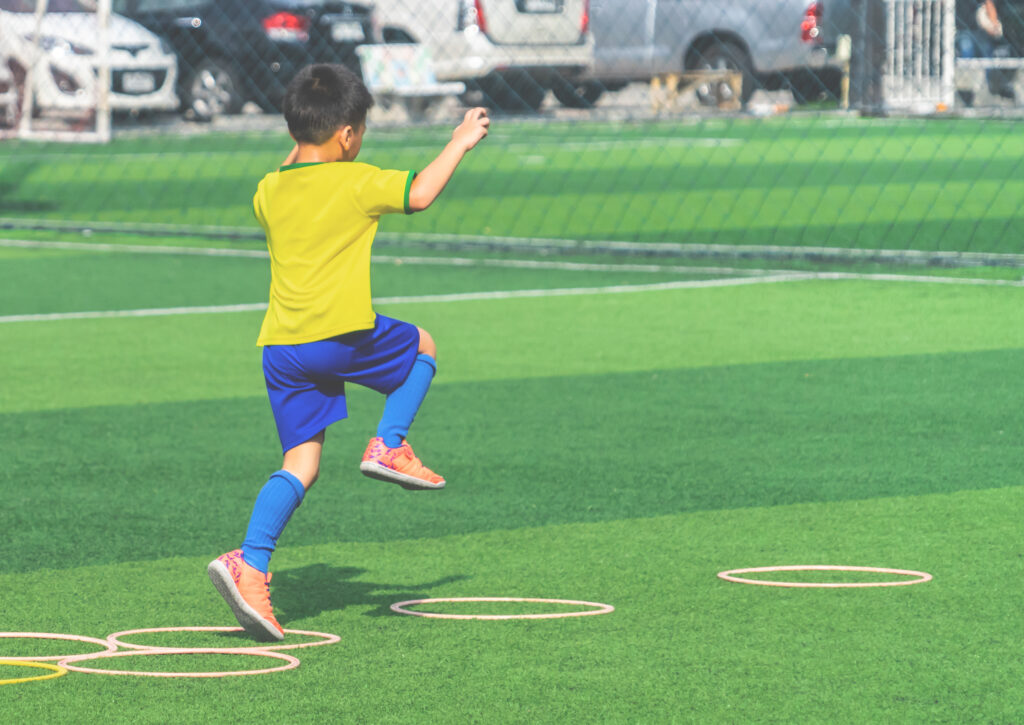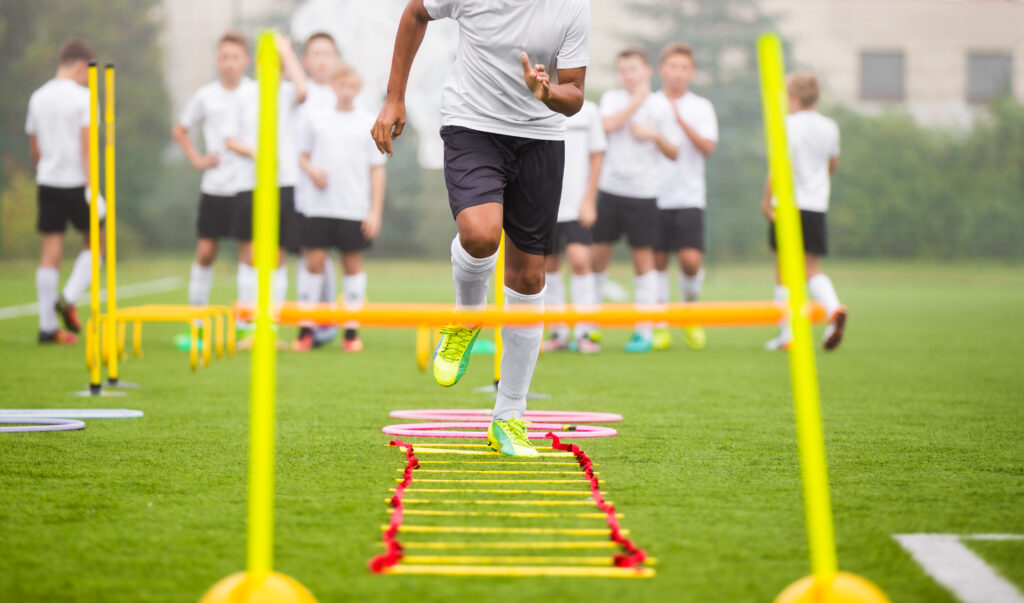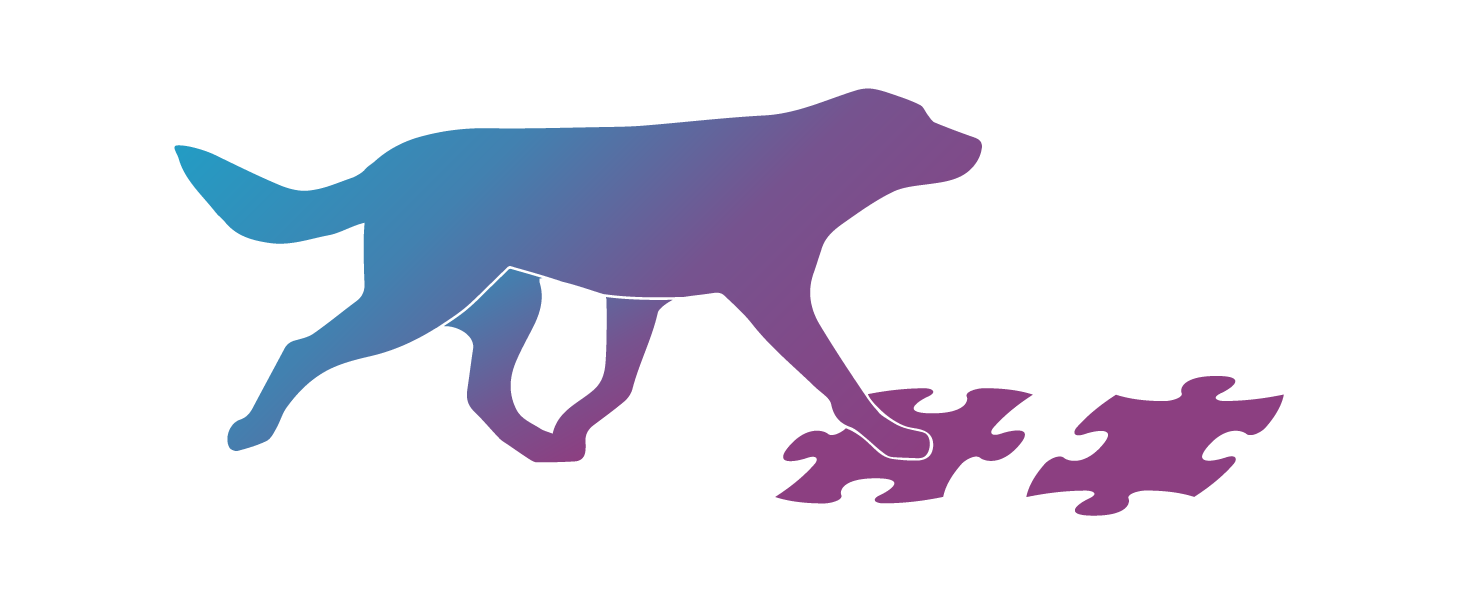Imagine your dog running around a cone at full speed. Or hitting the running contact spot on. Or moving through the rubble, putting all their effort into finding a missing person.
All of these scenarios require movement skills from our dogs. Coordination skills. Skills that tell them how to use their body while in movement. To keep balance, precision and sequence different movement patterns. And we often count on our dogs learning these skills during their sports or work training.
But is it really the best way?
The truth is, learning movement skills while doing sports exercises actually results in a very limited set of movement skills. The dog will know how to solve a very specific exercise involving movement. But he won’t have more general movement skills that will keep him at his top performance.
Another big problem is that limited movement skills also means overloading some parts of the body while doing the exercises over and over again. And we know what overload means … risk of injuries!
In order to link our dog’s fitness program to real life situations, we need to have movement exercises in there. Exercises where our dogs develop movement skills that carry over to sports and work. And that teach our dogs to really use the power and strength they have. We need coordination exercises for our dogs!
What is coordination?
Coordination. What is it? Can we train coordination?
The definition of “coordination” may sound like this: the ability to use different parts of the body together smoothly and efficiently.
Still, even when we know the definition, coordination is something vague. It’s difficult to quantify or measure. And it’s also difficult to see the progress or benefits of doing coordination exercises. In strength training we can visually see improvements in the muscle tone and in the way our dogs carry their body. That’s a huge +R to us to actually see the proof of our work. But how do we actually know if someone has good coordination? Can we visually recognize it?
With good coordination the movement looks effortless and easy. Even complex movements look effortless when carried out with good coordination. Good coordination also makes the movement look fluent. This isn’t super helpful, I know 😀 And I guess that’s why we hear so little talk of coordination in the dog training world.
Coordination is a skill. It can be learnt!
With coordination it’s often thought that you’re either born with good coordination or not. Actually, good coordination is a skill. It can be learnt.
In human athlete training, coordination training actually takes up a huge part of the training routine. Running between cones, quick changes in the movement, skipping for 10 meters and then sprinting. Doing sidesteps in a soft flexible ladder. Exercises designed to work on movement rhythm, sequencing different movements, maintaining balance, spatial orientation, responding to different stimuli etc.



In dog training we are really missing this area of physical training. We have fitness training focusing on strength and endurance. We have sports training focusing on the technical skills. Then we go hiking in the forest. And that’s it. We don’t really have much non-sport specific training. We don’t have movement exercises that would help our dogs to develop their coordination skills or general motor skills. Their movement skills.
Movement Puzzles – coordination training for dogs
That’s where Movement Puzzles come into play. Movement Puzzles are exercises focusing on various elements of coordination training, inspired by the human coordination and movement exercises you saw in the images above. By using the 2-bowl game (Vito’s game), we teach our dogs to move between cones and complete various movement challenges independently. Our dogs are fully in control of the exercises.
The options for exercises are endless and what you see here is just a beginning. By chaining together various behaviors/interactions with objects, our dogs will be working on:
- choosing the appropriate gait for the exercise
- eye-paw coordination and spatial orientation by identifying the objects and planning their movements
- precision during movement by stepping onto and over various objects
- sequencing different movements together and adjusting the gait to match different elements in the exercise
- dynamic balance by moving over objects and making turns
- planning the foot pattern to match the turn radius
These are all important elements of coordination and movement efficiency. Our dogs know how to move, but let’s help them become more skillful at moment. More efficient. So that they become more confident and better in control of their movement.
Benefits of coordination training
Coordination skills give your dog’s body the tools to solve movement challenges without actually compromising the body. Coordination training gives the learner the tools to vary the exercises (remember, we want some variability in the movement!) so that none of the body parts get overloaded. Good coordination skills allow the body to adjust the movement throughout the repetitions so that the sports exercises won’t become too harsh on the body.
Lack of coordination skills means the lack of skill to vary movement, resulting in repetitive loads and potential overload injuries. Yet, reducing the risk of injuries is one of the key things we want to achieve with any fitness training.
Working on coordination skills helps to make movement more efficient. Good coordination also helps to improve performance. It helps to react faster to cues. When our dogs learn how to use their body better, it’s easier to maintain balance, adjust the movement patterns to meet the exercise criteria.
And that’s why we need coordination training. It’s the crucial link between fitness training and sports training to link strength to movement.
That’s it for today’s post. Leave me a comment below and let me know what do you think of doing coordination exercises with dogs?
See you soon!
Happy training!
Mari & Co.
